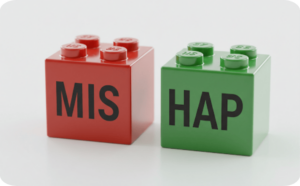No products in the cart.

For many caregivers, sending your child off to school for the first time can be exciting. Children typically begin Kindergarten at age 5, with many starting a year earlier—at age 4—in a Pre-K or Transitional Kindergarten program. In 1st grade, students’ literacy skills develop quite quickly. This is the year they will hopefully become proficient readers.
But what if your teacher shares that your child is behind in reading? This can feel overwhelming, wondering where and how to begin to support your child. How behind are they? What can be done for them to catch up? Will they struggle throughout their school years? Have I failed as a caregiver?
As scary as these feelings can be, try not to panic. Reading challenges are common, with an average of 20-30% of children who will require some sort of strategic reading instruction in grade school.
Prior to any sort of cognitive diagnosis, it’s important to consider low-lift interventions that will help your child be successful. Talk with your child’s teacher about HOW reading is being taught. Over the last 5 years, there has been a huge push to return to a systematic and phonics-based approach to reading instruction. This is called the Science of Reading and encompasses decades of research on how we learn to read. If your child’s teacher states that they are using “Balanced Literacy”, leveled readers, or a cueing system. then be prepared to discuss research-based strategies. This information was highlighted as a red flag in our previous post, What is Reading Therapy.
Whether or not your child’s school has adopted a Science of Reading approach to reading instruction, there are quick boxes to check prior to making any larger decisions. Making sure their hearing and vision screenings are up to date. Ensure your child’s attendance at school is as consistent as possible. Also, ensure they have a limited amount of screen time (ipads, phones, internet) because of the myriad of ways technology negatively affects brain development, especially in young children.
Hopefully, your child’s school has intervention services that can give your child extra support. Ask how your child would qualify for extra help and push towards goals that are realistic, measurable, and achievable. This does not always have to equate to an IEP (Individualized Education Plan). If your child’s school does not have extra services (or your child doesn’t qualify for them), consider investing in a reading therapist who is qualified to use research-based strategies. Information on where to begin can also be found in the What is Reading Therapy post.
If you have concerns about dyslexia, keep in mind that 1 in 5 children are affected by some form of it, ranging from mild to severely impacted. Dyslexia is a weakness in decoding words and impaired phonologic functioning. Family history can be a strong indicator of dyslexia. Unfortunately, stigma still exists for students with any form of neurodiversity but learning about misconceptions can be a good start to understanding your child’s unique learning style.
A formal diagnosis is typically made by a qualified professional, such as a school psychologist, or through a referral from a pediatrician. Although dyslexia is commonly talked about, there are also other diagnosable specific learning disabilities, such as Auditory Processing Disorder and ADHD. With the right intervention and support, reading challenges can be reduced, helping students become more confident and engaged learners.
Written by Michelle Kim Palasek, SFL Clinician







No comment yet, add your voice below!